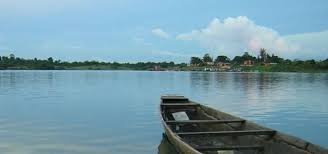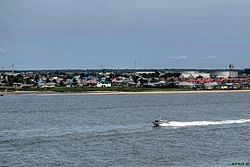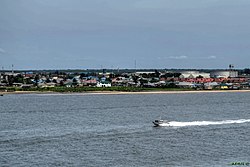Nigeria is a country of vibrant cultures, breathtaking landscapes, and diverse climates. From the lush greenery of the south to the arid beauty of the north, every region offers something unique. But just as important as where you go is when you go. Nigeria’s climate is broadly tropical, with rainy and dry seasons, but conditions vary greatly from region to region. Here’s a guide to the best time of year to visit each Nigerian region for the richest travel experience.
South West Nigeria (Lagos, Ogun, Oyo, Osun, Ondo, Ekiti)
- Best Time: November to March (Dry Season)
- Why: This region boasts vibrant cities like Lagos and Ibadan, as well as cultural treasures such as the Osun Osogbo Sacred Grove and Olumo Rock. The dry months are perfect for exploring markets, beaches, nightlife, and festivals without heavy rainfall disrupting plans. Lagos beaches like Tarkwa Bay and Elegushi are especially lively around December.
- Tip: If you love culture, visit in August during the annual Osun Osogbo Festival.

South East Nigeria (Enugu, Anambra, Abia, Ebonyi, Imo)
- Best Time: November to February
- Why: The harmattan period brings cooler, drier weather, making it ideal for exploring natural attractions such as the Ngwo Pine Forest, Awhum Waterfall, and cultural heritage in Onitsha and Enugu. Roads are more accessible, and festivals like the New Yam Festival (August–October) offer authentic Igbo cultural experiences.
- Tip: If you want to enjoy Igbo celebrations, consider late August to October, when yam festivals light up towns and villages.

South South Nigeria (Rivers, Cross River, Delta, Edo, Akwa Ibom, Bayelsa)
- Best Time: December to March
- Why: This oil rich and culture-rich region is lush but can get heavy rains between April and October. Visiting during the dry season makes outdoor adventures easier whether you’re exploring Cross River’s Obudu Mountain Resort, Edo’s cultural sites, or the Niger Delta’s creeks.
- Tip: Don’t miss December in Calabar, when the Calabar Carnival Africa’s biggest street party transforms the city into a dazzling hub of music, parades, and dance.

North West Nigeria (Kano, Kaduna, Katsina, Sokoto, Jigawa, Kebbi, Zamfara)
- Best Time: November to February
- Why: The far north is hot most of the year, but during harmattan (November–February), the climate is cooler and more pleasant for visiting landmarks like Kano’s ancient city walls, Argungu in Kebbi (famous for its fishing festival), and Sokoto’s cultural mosques.
- Tip: Plan for February/March if you want to witness the spectacular Argungu Fishing Festival, a centuries-old cultural event.

North East Nigeria (Borno, Yobe, Adamawa, Taraba, Bauchi, Gombe)
- Best Time: November to March
- Why: This region features stunning natural attractions like Yankari Game Reserve (Bauchi), Gashaka-Gumti National Park (Taraba), and Mandara Mountains. Cooler harmattan months make wildlife safaris and mountain hikes more enjoyable. The rainy season (June–September) can make travel difficult.
- Tip: If you love safaris, visit December–February when wildlife in Yankari congregates around watering holes, giving you the best chance to spot elephants, lions, and baboons.

North Central Nigeria (Abuja, Niger, Benue, Kogi, Kwara, Plateau, Nasarawa)
- Best Time: October to March
- Why: With Abuja as the capital, this region blends modern attractions with natural wonders like Gurara Falls, Zuma Rock, and the Jos Plateau. The dry season offers cool weather in the highlands (especially in Plateau State), perfect for hiking and outdoor exploration.
- Tip: For a vibrant cultural immersion, visit Benue during the Idoma International Carnival in December or Plateau during the Nzem Berom Festival in April.

Final Thoughts
Nigeria is a year round destination, but the dry season (November–March) is generally the best time for most regions, offering comfortable travel conditions and a packed cultural calendar. However, if your interest lies in festivals like the Osun Osogbo Festival, New Yam Festivals, or Calabar Carnival, planning around their specific dates can enrich your journey.
In short:
- South & Central Nigeria: Great for year-round travel, but best in the dry season.
- Northern Nigeria: Avoid the hot months; harmattan is perfect for cooler adventures.
- Festival lovers: Plan trips around August (Yam Festivals), December (Carnivals), and February/March (Argungu Festival).






